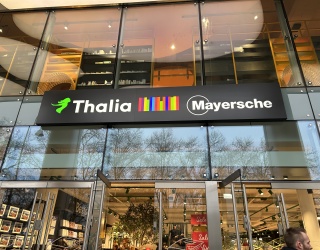
Four years ago, two bachelors of business management Pablo Theux and Alpaslan Yildirim decided to become service providers with the KMLS GmbH Company, specializing in technology and energy efficiency in retail. Back then, they already realized how many companies had an urgent demand for professional services in this area. Even today, the need for consultation is often still great. In this interview, Pablo Theux explains what retailers can do in their own stores in terms of energy optimization.
Mr. Theux, at this point retail has a number of options for energy optimization. What measures lend themselves to new construction?
When it comes to building new brick-and-mortar stores, the retail industry has many opportunities to optimize energy efficiency in terms of energy management and thus minimize energy consumption and costs. Nowadays, the intelligent use of energy efficient lighting, energy efficient cooling and heating systems with waste heat recovery as well as integrated control of all systems make it possible to avoid wasting energy from the day the store opens. Remote access is also ideal, which makes online monitoring possible for experts at any time.
The technical installations in retail stores are often designed to last between eight and ten years. Is this adequate or does retail nowadays not need more flexible systems?
It is indeed too one-dimensional to merely consider the system life span. It is important for technical installations to provide enough flexibility to still work in an energy-efficient manner after potential necessary store modifications. Retail should allow for changes during this timeframe and consider them during the planning process and in investment decisions. These could even be modifications that are related to the offered product selection.
I recommend understanding a retail business like a living organism, where all of the systems are able to provide a flexible response or respective adjustment to changed conditions. It is also important that the use of an energy management system should be as simple as possible. This ensures that even less technology savvy employees are able to start up the ventilation by simply pushing a button for example. Ideally, the system then turns off automatically when it has reached the target values.
What measures can a retailer take to identify the optimization potential in existing installations?
It makes sense to face up to your own reality with an analysis of the current state of the business. This delivers information on current energy consumption per facility and important starting points for optimization measures at the same time. In an ideal world, retail works with well-maintained systems that are all synchronized. All inventory documentation is available and every person in charge knows where and what was being built.
However, the reality is different. Over the years, there has been employee turnover or acquisitions by other companies as well as building remodels. Technical installations are also often modified and the technical information is not always completely available. There could also be systems that have no longer worked with the other systems after a certain point in time. In these cases, a temporary solution is often introduced that is meant to be only used in the interim, but is actually being utilized over many years and strongly compromises energy efficiency. Yet, this is exactly why the room for improvement and possible money savings are huge. What’s more important though is that this can be realized with comparatively little effort.
What options do retailers have in optimizing existing installations and how much expenditure is needed for this?
We are talking about cascading actions in this connection. What I mean by this is for instance eliminating user mistakes, measures that avoid competing systems or a holistic optimized system operation within the realm of their technical capabilities. The expenditure differs depending on the type and size of the store. Empirically, you can assume an investment payoff for the majority of measures within two to four years.
How high are the average possible savings for retailers?
Of course, the starting point of every individual retailer is crucial in determining the possible savings. We often see electricity savings between 20 to 25% with several thousand of energy efficiency measures realized. In our experience, the achievable savings are somewhat higher in the area of heat energy.
Interview by Daniel Stöter, iXtenso.com





